Jona Lendering
Jona Lendering read history at Leiden University (MA 1993), specialized in Mediterranean culture at the Amsterdam Free University (MA 1996), and worked at excavations in Holland (Riethoven) and Greece (Halos). After teaching historical theory and ancient history at the Free University for several years, he was one of the founders of a school for history teaching, Livius Onderwijs. Born in Amsterdam, it has now spread to auxiliary locations in Bussum, Dronten, Gouda, Haarlem, Hoorn, Schagen, Zaanstad, and Zoetermeer. As of 2013, Livius Onderwijs has eight teachers, about 500-600 students a year, and offers tours to countries like Italy, Turkey, Iran, and Lebanon. The field trips help to etch into the students' minds some of what they've learned at the school.
Because history is for a large part telling a story, something you do best in your own language, Lendering prefers to publish in Dutch journals. However, he has contributed to the Bryn Mawr Classical Review and Ancient Warfare, while he is the founder of Ancient History Magazine. He is also the publisher and editor of the on-line publication of the Babylonian Chronicles of the Hellenistic Period, a set of important cuneiform sources for the history of the Seleucid and Parthian Near East, transcribed, translated and commented on by Bert van der Spek of the Free University Amsterdam and Irving Finkel of the British Museum. A publication as book is in preparation.
Lendering has written several books and maintains a blog in Dutch. He is the author of several books, including Edge of Empire and Consensus and Crises. For the Livius website, which has received several awards, he collaborates closely with Bill Thayer of LacusCurtius. Lendering is also the webmaster of two daily blogs, the MainzerBeobachter.com and Grondslagen.net.
There are 9380 items in Jona Lendering:
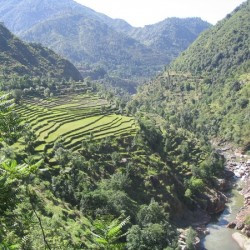
Terraces, south of Aornus |
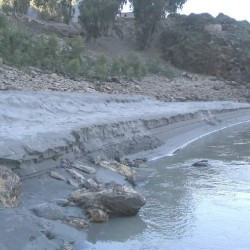
Sediments of the Indus |
Insula
Insula ("island"): Latin name for a housing block in a city built according to the Hippodamian Plan. The insulae of Pompeii…Intaphrenes
Intaphrenes (Old Persian Vindafranâ): Persian courtier and general. Intaphrenes was one of the seven conspirators who killed the Magian usurper Gaumâta and helped Darius I the Great become king (September 522 BCE). …Intermezzo
In 421, the Archidamian War, which had lasted ten years, came to an end. Sparta had tried to defeat Athens and liberate the Greek towns belonging to the Athenian empire, but had miserably failed. In the six years following the…Intermezzo: The Hasmonaeans
Messiah (mâšîah, "the anointed one"): Jewish religious concept, a future savior who will, in some sense, come to restore Israel. Both the nature of the Messiah and the restoration were matters of debate.The Hasmonaeans After Cyrus the Great had taken Babylon (in…Iol Caesarea
Iol Caesarea: Phoenician colony, Numidian city, capital of the Roman province Mauretania Caesariensis, modern Cherchell.Iol Caesarea Juba II c.400 BCE: founded as…The battle of Ipsus
The battle of Ipsus (301 BCE): Main battle of the Fourth Diadoch war. Antigonus the One-Eyed and his son Demetrius Poliorcetes were defeated by Lysimachus, Cassander, and Seleucus I Nicator.Prelude …
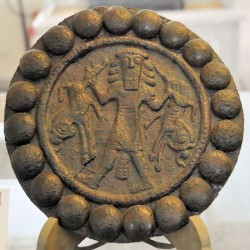
Iranian Azerbaijan, Disk with a deity with two wild animals |

Iranian Azerbaijan, Iron Age Arrowheads |
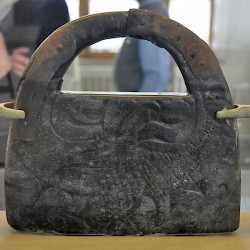
Iranian Azerbaijan, Stone weight |
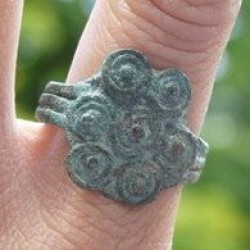
Iron Age ring from Hyrcania/Parthia |